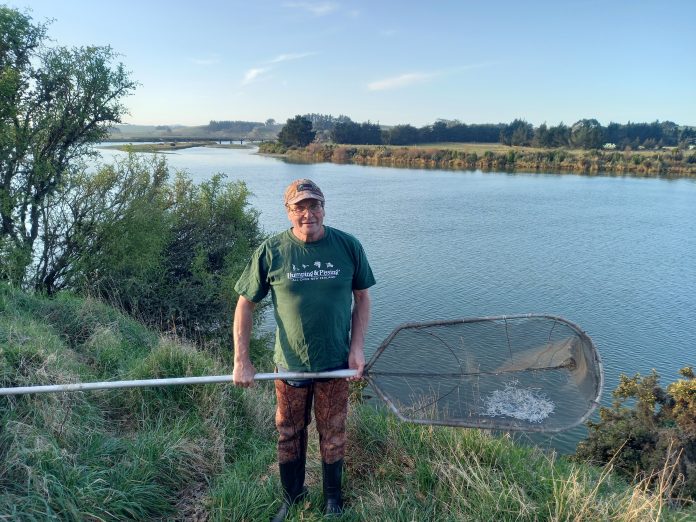The waiting is over for the hundreds of North Otago people who go whitebaiting each spring.
The season started yesterday — September 1 — and ends on October 30. That’s a considerably shortened time in which to catch the elusive little delicacies.
The Department of Conservation said the truncated season was an important step towards a sustainable whitebait fishery.
The new season dates would help to reduce fishing pressure on all whitebait, especially the most threatened species, and ensure the season was consistent throughout New Zealand, Doc whitebait fishery manager Nick Moody said.
‘‘Whitebait are taonga and mahinga kai for Maori and provide a much-loved recreational pastime for New Zealanders.
‘‘However, four of the six whitebait species are classified as threatened or at risk of extinction from a variety of causes, including habitat loss and barriers to their migration.
‘‘Our goal is to ensure healthy and restored whitebait populations and provide equitable access to a sustainable and thriving fishery. We want to ensure the decline is reversed. No-one wants to see whitebait go extinct.’’
The only area where the new regulations are not in force is the Chatham Islands, which keeps its traditional season of December 1 to the last day of February.
Most of New Zealand’s whitebaiting season previously ran from August 15 to November 30, while the West Coast’s ran from September 1 to November 14.
The new dates were announced in June last year as part of a thre-year rollout of changes to whitebaiting regulations, after two years of public consultation.
Whitebait refuges have now been created in Abel Tasman National Park and the southern part of Fiordland National Park, and alterations made to regulations on fishing gear and methods.
‘‘This year we will continue the work we began last season on gathering data to help us better manage the fishery,’’ Mr Moody said.
‘‘Expect to see us out on the river counting the number of fishers and their methods during the season.
‘‘We are really keen to engage with fishers and the wider community and will provide fishers with opportunities to give feedback on the implementation of new regulations and quality of their fishing experience.’’
North Otago whitebait numbers have been good for the last few seasons, devotees said.
Brent Martyn, whose family have been keen whitebaiters for generations and who sell nets at their Oamaru shop, Martyns Cycles, wondered whether the reduced season would put more pressure on the fishery as people had less choice about when to go to the rivers.
It was good that the fishery was being protected nationally, he said, but the ‘‘numbers are fine’’ here, even with an increase in whitebaiters.
‘‘They’re not declining.’’
Whitebait prices were likely to go up this year, Mr Martyn predicted. He was planning to be out on the Kakanui River yesterday morning for the season opening.
Fishers are allowed to get whitebait from 5am to 8pm, then from 6am to 9pm after daylight saving takes effect.
It was hard to predict what the season would produce, he said.
‘‘It goes in cycles.
‘‘It’s about reading the current and the water.’’
The moon’s changing effects on tides could also be a factor.
Mr Martyn recommended beginners try the Kakanui River at first — it was much safer than the Waitaki River, where high water flows were a factor. Oamaru Sports and Outdoor co›owner Barry McCallum said everyone had been looking forward to the season starting.
More were concerned about losing the last two weeks of the season than the first two, he said.
‘‘We’ve had such good seasons, we wonder is it necessary here.’’
However, he conceded it was easier to have one set of dates for the whole country, and ‘‘no-one’s up in arms’’ about the changes. The rules for whitebaiting equipment had not changed for this part of the country, Mr McCallum said.
Customers had been buying mesh to repair or replace their nets.
‘‘There’s always a run on that.’’
Doc has produced leaflets explaining the new rules and they can also be accessed on its website.




